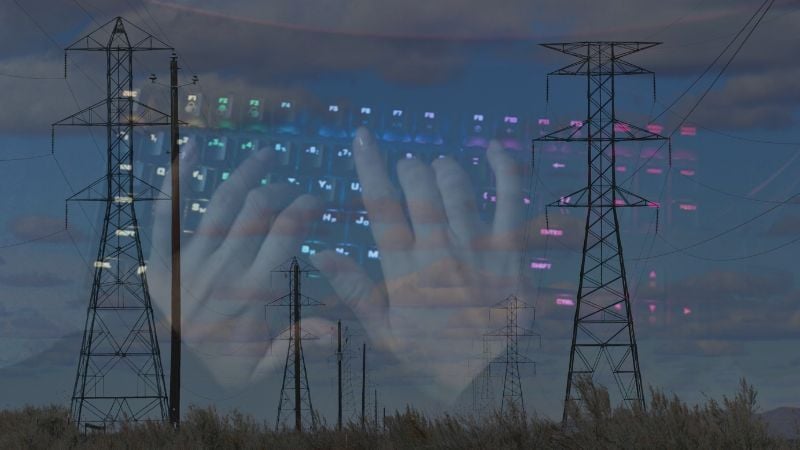Protecting the Grid: Does AI Hold the Key to Cybersecurity?
A $45 million Department of Energy grant will fund the development of a power grid cybersecurity system using artificial intelligence.
Cybersecurity concerns have risen as connected technologies have become more common across the nation’s grid. These risks haven’t gone unnoticed by authorities. In one of the latest initiatives to protect critical infrastructure, the Department of Energy (DOE) has awarded Georgia Tech $4.2 million to develop an artificial intelligence (AI) grid security solution.
This investment is part of a $45 million DOE project funding 16 different cybersecurity solutions in the energy sector. While the research is still in its early stages, its impact could have significant implications for the future of energy grids and the organizations that run them.
Cybersecurity is a growing concern for the power grid. Image used courtesy of Pexels
How Georgia Tech’s AI Security Solution Works
Georgia Tech’s contribution to this initiative is an AI framework called DerGuard. The “Der” refers to distributed energy resources (DER), which pose particular security risks to the nation’s rapidly evolving grid.
While substations and other large infrastructure may be obvious targets for cybercriminals, DERs may be more vulnerable. Rooftop solar panels and local battery storage systems may not have the same resources or oversight as larger grid elements. Since DERs are growing so rapidly—this market will nearly double in the next few years—they could provide cybercriminals with far more opportunities to attack U.S. grids.
DerGuard addresses these dangers by analyzing DERs and their usage across a section of the grid. This AI model then categorizes them according to their risk level, highlighting which resources would cause the most damage if compromised. DerGuard will also identify potential vulnerabilities in these high-risk DERs to inform more relevant cybersecurity patches and upgrades.
Concept of distributed energy resources. Image used courtesy of Environmental Protection Agency
Georgia Tech stated its researchers hope to collaborate with other industry partners to take this tool further. Through more collaboration, they’d establish a baseline for normal behavior on connected grid infrastructure. This benchmark would enable faster AI-driven incident detection and response.
Other Projects in the Energy Cybersecurity Initiative
DerGuard could yield significant security improvements across the national grid, but cybersecurity efforts can’t stop there. Cyberattacks are growing in both number and complexity, and critical infrastructure is lagging behind other sectors in terms of security modernization. Other projects under DOE’s $45 million investment plan could help close that gap.
Texas A&M is developing an authentication system to verify authorized users on sensitive grid networks. This includes advanced encryption methods to resist attacks from quantum computers, which could break past current encryption standards as they become more accessible.
Georgia Tech isn’t the only organization in this project applying AI to grid cybersecurity. The Electric Power Research Institute is also working on an AI solution to detect and respond to cybersecurity incidents in real time. Many organizations in other industries already use similar AI tools to minimize response times and costs. However, a grid-scale application takes it to new heights.
Other projects under this umbrella include secure grid communication systems, digital twins that detect attacks on power generation infrastructure, and a more forward-thinking DER development process.
The Future of Grid Cybersecurity
Energy authorities are taking cybersecurity more seriously than ever. While not every engineer needs to develop advanced AI protections like DerGuard, everyone in the industry should adopt a more security-centric work philosophy.
Right now, these DOE projects are just experiments to push overall security further. However, the government’s involvement could signal incoming regulatory changes. While not a new law, the Energy Independence and Security Act aims to improve U.S. energy security, so newer, more specific standards could arise to apply this regulation to the current threat environment.
Energy professionals who don’t adapt to working with new security standards or expectations may encounter difficulty in the future. That could mean facing regulatory penalties or struggling to compete with more security-minded competitors. Monetary concerns aside, this massive investment in grid security highlights this issue’s urgency. Cybersecurity is essential to continued business.
Cyberattacks on grid infrastructure could cause widespread damage. Incidents in critical infrastructure cost over $1 million more than data breaches in other sectors and could impact people’s physical well-being if they disrupt enough crucial operations. Even if engineers don’t implement the AI tools funded by the DOE, they must embrace higher security measures to prevent these extremes.
As promising as the DOE’s security investments are, it’s worth noting that human error is one of the most common causes of breaches in this industry. Consequently, technical defenses alone are insufficient. Energy companies must also train all employees on security best practices to prevent the worst. The more security-minded a professional is, the more they will succeed in this industry in the future.
Modern Grid Technology Requires Thorough Security
The nation’s power grid is evolving. While advancement has many positive cost-efficiency and sustainability implications, it also means the industry must adapt to new threats.
The DOE’s massive investment in cybersecurity technology highlights the size of this problem. Electrical engineers must adopt a security-first mindset to ensure their work and the people they serve remain safe as cyber threats grow.








